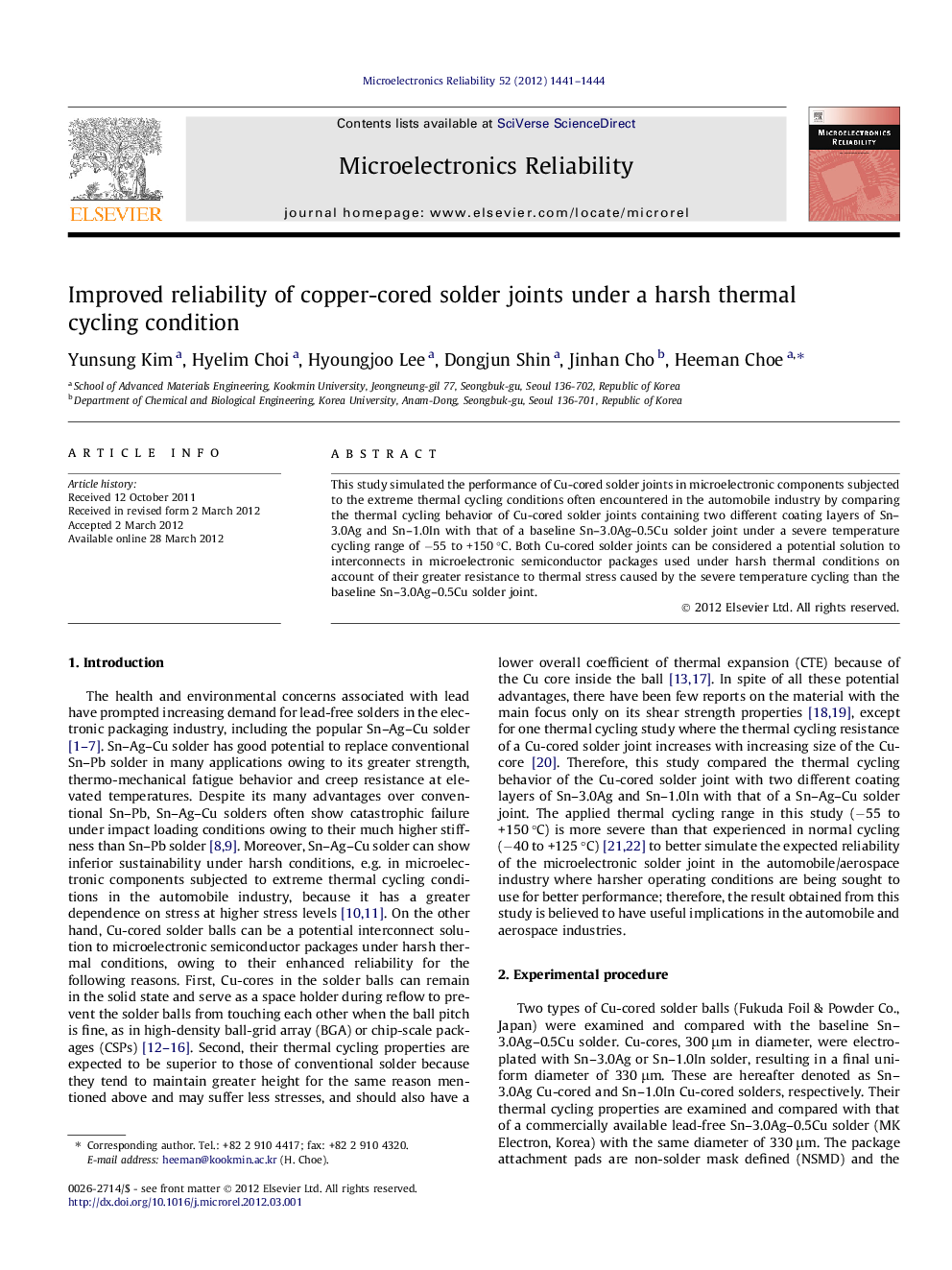| Article ID | Journal | Published Year | Pages | File Type |
|---|---|---|---|---|
| 547079 | Microelectronics Reliability | 2012 | 4 Pages |
Abstract
This study simulated the performance of Cu-cored solder joints in microelectronic components subjected to the extreme thermal cycling conditions often encountered in the automobile industry by comparing the thermal cycling behavior of Cu-cored solder joints containing two different coating layers of Sn–3.0Ag and Sn–1.0In with that of a baseline Sn–3.0Ag–0.5Cu solder joint under a severe temperature cycling range of −55 to +150 °C. Both Cu-cored solder joints can be considered a potential solution to interconnects in microelectronic semiconductor packages used under harsh thermal conditions on account of their greater resistance to thermal stress caused by the severe temperature cycling than the baseline Sn–3.0Ag–0.5Cu solder joint.
Related Topics
Physical Sciences and Engineering
Computer Science
Hardware and Architecture
Authors
Yunsung Kim, Hyelim Choi, Hyoungjoo Lee, Dongjun Shin, Jinhan Cho, Heeman Choe,
